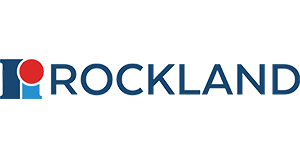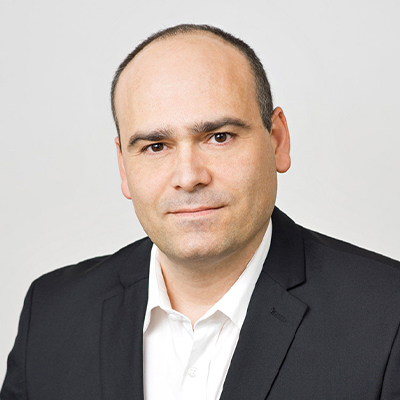EGFR Antibody
EGFR Antibody
SKU
ROC100-401-149
Packaging Unit
250 µL
Manufacturer
Rockland
Availability:
loading...
Price is loading...
Application Note: Anti-EGFR antibody has been tested by and is specifically designed for ELISA, immunoblotting, immunoprecipitation, and immunohistochemistry. Reactivity in other assays is likely, but has not been determined. Recognition of EGFR is independent of the phosphorylation status at tyrosine 1173. A431 cells, keratinocytes in normal epidermis, or placenta are typically used as positive control sources. The antigen is typically localized in the cell membrane. For western blotting, good results are also achieved on PVDF membranes blocked with 5% lowfat milk diluted in TTBS for 1 hour at room temperature. Also, dilute the primary antibody and secondary in 5% lowfat milk in TTBS. Anti-EGFR can be diluted up to 1:10,000 for immunoblot depending on the cell line and the amount of EGFR in a particular lysate. For immunoprecipitation, use approximately 10 µl of the antibody. The immunoprecipitation mix should contain the antibody, 25 µl of Protein A-agarose beads and 1.0 ml of lysate (lysate contains approximately 1.0 mg of total protein). This mixture should be rotated overnight at 4°C and then washed 3 times with lysis buffer (used to prepare the lysate). The resulting bead complex is dissolved in 20-30 µl of 3X SDS-PAGE sample buffer and approximately 15 µl is loaded per lane on an 8% polyacrylamide gel.
Concentration Value: 85 mg/mL
ELISA Dilution: 1:10,000 - 1:50,000
Immunohistochemistry Dilution: 2.5 µg/mL
Immunoprecipitation Dilution: 10 µl
Western Blot Dilution: 1:1,000 - 1:10,000
General Disclaimer Note: This product is for research use only and is not intended for therapeutic or diagnostic applications. Please contact a technical service representative for more information. All products of animal origin manufactured by Rockland Immunochemicals are derived from starting materials of North American origin. Collection was performed in United States Department of Agriculture (USDA) inspected facilities and all materials have been inspected and certified to be free of disease and suitable for exportation. All properties listed are typical characteristics and are not specifications. All suggestions and data are offered in good faith but without guarantee as conditions and methods of use of our products are beyond our control. All claims must be made within 30 days following the date of delivery. The prospective user must determine the suitability of our materials before adopting them on a commercial scale. Suggested uses of our products are not recommendations to use our products in violation of any patent or as a license under any patent of Rockland Immunochemicals, Inc. If you require a commercial license to use this material and do not have one, then return this material, unopened to: Rockland Inc., P.O. BOX 5199, Limerick, Pennsylvania, USA.
Immunogen: This whole rabbit serum was prepared by repeated immunizations with a peptide synthesized using conventional technology. The sequence of the epitope maps to a region near the carboxy terminus which is identical in human, mouse and rat EGFR.
Physical State: Liquid (sterile filtered)
Purity and Specificity: This antiserum is directed against human epidermal growth factor receptor (EGFR) and is useful in determining its presence in western blotting and immunoprecipitation experiments. This antibody can detect EGFR from human, mouse and rat sources. Reactivity of this antibody with EGFR from other species is unknown. No reaction is observed against ErbB-2, ErbB-3 or ErbB-4.
Background: EGFR is a transmembrane glycoprotein that is a member of a family of protein tyrosine kinases crucial to maintaining a normal balance in cell growth and development. Growth factor receptors are involved not only in promoting the proliferation of normal cells but also in the aberrant growth of many types of human tumors. For example, the epidermal growth factor receptor (EGFR) is mutated and/or over-expressed in many common solid human squamous cell carcinomas including breast, brain, bladder, lung, gastric, head & neck, esophagus, cervix, vulva, ovary, and endometrium. Over-expression of the EGFR gene occurs in carcinomas with and without gene amplification. EGFR and ErbB-2 are particularly important in breast cancer because increased production or activation has been associated with poor prognosis. EGFR belongs to a family of growth factor receptors, which also includes ErbB-2/HER-2/neu, ErbB-3/HER-3/neu and ErbB-4/HER-4/neu. EGFR can heterodimerize with each of the members of this family.
Low Endotoxin: No
Other: User Optimized
Concentration Value: 85 mg/mL
ELISA Dilution: 1:10,000 - 1:50,000
Immunohistochemistry Dilution: 2.5 µg/mL
Immunoprecipitation Dilution: 10 µl
Western Blot Dilution: 1:1,000 - 1:10,000
General Disclaimer Note: This product is for research use only and is not intended for therapeutic or diagnostic applications. Please contact a technical service representative for more information. All products of animal origin manufactured by Rockland Immunochemicals are derived from starting materials of North American origin. Collection was performed in United States Department of Agriculture (USDA) inspected facilities and all materials have been inspected and certified to be free of disease and suitable for exportation. All properties listed are typical characteristics and are not specifications. All suggestions and data are offered in good faith but without guarantee as conditions and methods of use of our products are beyond our control. All claims must be made within 30 days following the date of delivery. The prospective user must determine the suitability of our materials before adopting them on a commercial scale. Suggested uses of our products are not recommendations to use our products in violation of any patent or as a license under any patent of Rockland Immunochemicals, Inc. If you require a commercial license to use this material and do not have one, then return this material, unopened to: Rockland Inc., P.O. BOX 5199, Limerick, Pennsylvania, USA.
Immunogen: This whole rabbit serum was prepared by repeated immunizations with a peptide synthesized using conventional technology. The sequence of the epitope maps to a region near the carboxy terminus which is identical in human, mouse and rat EGFR.
Physical State: Liquid (sterile filtered)
Purity and Specificity: This antiserum is directed against human epidermal growth factor receptor (EGFR) and is useful in determining its presence in western blotting and immunoprecipitation experiments. This antibody can detect EGFR from human, mouse and rat sources. Reactivity of this antibody with EGFR from other species is unknown. No reaction is observed against ErbB-2, ErbB-3 or ErbB-4.
Background: EGFR is a transmembrane glycoprotein that is a member of a family of protein tyrosine kinases crucial to maintaining a normal balance in cell growth and development. Growth factor receptors are involved not only in promoting the proliferation of normal cells but also in the aberrant growth of many types of human tumors. For example, the epidermal growth factor receptor (EGFR) is mutated and/or over-expressed in many common solid human squamous cell carcinomas including breast, brain, bladder, lung, gastric, head & neck, esophagus, cervix, vulva, ovary, and endometrium. Over-expression of the EGFR gene occurs in carcinomas with and without gene amplification. EGFR and ErbB-2 are particularly important in breast cancer because increased production or activation has been associated with poor prognosis. EGFR belongs to a family of growth factor receptors, which also includes ErbB-2/HER-2/neu, ErbB-3/HER-3/neu and ErbB-4/HER-4/neu. EGFR can heterodimerize with each of the members of this family.
Low Endotoxin: No
Other: User Optimized
| SKU | ROC100-401-149 |
|---|---|
| Manufacturer | Rockland |
| Manufacturer SKU | 100-401-149 |
| Package Unit | 250 µL |
| Quantity Unit | STK |
| Reactivity | Human, Rat (Rattus) |
| Clonality | Polyclonal |
| Application | Immunoprecipitation, Western Blotting, Immunohistochemistry |
| Isotype | Antiserum |
| Human Gene ID | 1956 |
| Host | Rabbit |
| Conjugate | Unconjugated |
| Product information (PDF) | Download |
| MSDS (PDF) |
|

 Deutsch
Deutsch







